Imported By: Weaver Models
MSRP March 2013: $75.45
Freight car fans often speak of signature car for a railroad. They are the car you first think of when that railroad is mentioned. For the PRR it might be an X29 boxcars, for the B&O it would be their Wagon-top boxcars, and for the Milwaukee Road would have to be their ribbed-side boxcars. Weaver Models has just released a new model of the Milwaukee Road ribbed-side boxcars in 2-rail and 3-rail.
Prototype History
For a complete prototype history of all the ribbed-side cars the Milwaukee Road rostered, I highly recomend reading Pat Wider’s article in RP CYC 13. The article talks about the development of the cars over a period in time from 1937-1959.
The cars that match the Weaver model were built between 1939-1940 by the Milwaukee Road. A total of 3188 40′ cars were built featuring welded construction and full length horizontal ribs. The cars were built in four groups.
In Ted Culotta’s “Essential Freight cars: 23” he talks about the Milwaukee road cars. He points out some detail differences in the four series of cars. The 500 cars built in 18000-18499 had steel running boards, Camel Doors (except # 18247 which had a Creco door) and Equipco hand brakes. The next series of 688 cars built in 1939 18500-19187 had wood running boards, both Camel and Creco doors and Equipco and Universal hand brakes. The third series of 1250 cars 19188-20437 were built in 1940, used camel doors, wood running boards, eequipco and Universal hand brakes. The last group of 750 cars 20438-21187 were also built in 1940, camel doors, equipco and Universal hand brakes but they had steel running boards.
Prototype Population
3188 cars built 1939-1940
3112 cars in the January 1952 Official Railway Equipment Register
The Models
I first saw the pilot model of this car at last Fall’s Strasburg Show. I have to admit I was not overly impressed at that time. I ordered one anyway. Both to support one of our manufactures developing a new model and thinking even if it’s a dog there might be something that can be used to build something else.
I got a call from my dealer when they arrived and I went over to pick mine up. My first thought after taking it out of the packaging was hey this looks better than I was thinking. So I dug my reference materials to check it out.
The model represents the earliest versions of the prototype cars built in 1939-1940. I checked the body against the reproductions of the prototype drawing from Pat Wilder’s article. I found it to be very close to those prototype drawings.
One of the first things about the cars that jumps out at you is the different roof. We often view our models from a higher view point than in real life, roofs are important. The Wilder article called this a “Murphy Type 1 40′ double panel welded roof.” This one is nicely done a closely matches the drawings.
The underbody is where we start to see some of the three rail compromises start to show up. The major parts to the brake equipment are modeled and in the correct locations but they are molded onto the underframe. This will be an easy upgrade.
The roofwalk supports on the ends of the car are modeled as two solid triangles of plastic, they should be separate supports. The ladders are not that bad but the grab irons of the left hand side of the car side are pushed in very close to the car side. This may be a matter of pulling them out to stand out further from the car side. On my model the doors did not have any hardware on them. Again this will be an easy upgrade.
I model in Proto48, I will replace the trucks on my model. The truck side frames have no casting numbers on them and the wheelsets have no backside detail. They appear to have a “China” mark inside the bolster even though these cars are promoted as being made in the USA. For those that want to know about the O Scale trucks I’ve added their measurements to my O Scale Wheel Standards Page. They were out of current NMRA Standards on all measurements except the back-to-back measurement. Another reason I’m glad I model in Proto48, where we have and use a standard.
Paint is very subjective and is usually the subject of many heated discussions. Since this is an off-road car for me, I have to rely on others to research the correct paint and lettering. The most recent article, the Pat Wilder article states, “Milwaukee Road’s 40′ and 50′ steel box and automobile cars were initially painted entirely freight car red, the exact hue is unknown to the author. Circa the 1950’s the railroad used a shade of Mineral Red. A close match for MILW Mineral Red is Scalecoat #2 Oxide Red, as indicated by a Boles color drift card.” The model appears close to that.
Paint schemes are another thing. The Wilder article has a list of the numbers known to have worn the “Route of the Olympian” scheme. The word “known” there is important as it means we have photographic proof. I know other cars may have worn the scheme, but here are the ones we know of. The list has 152 numbers out of the 3188 cars built. And you guessed it, the car number I received is not on the list. Neither were the other two numbers my dealer still had in stock. When the information is known and published, why is it so hard for the manufacturers to get the numbers right? Or is it that they don’t care? So now I have to renumber the model or exchange it with my dealer when the more numerous Hiawatha scheme is released.
Since I posted this page, Peter Zacharias emailed Weaver about using the wrong numbers for the Route of the Olympian. Weaver’s response follows:
One of the four numbers is correct (18861). We were informed of the numbers for G25004 after the first run was printed. This will be corrected.
Have a Great Day!
Weaver Models
O Scale has had versions of these cars available from Custom Brass and a series of different versions cast in resin from Rails Unlimited. This release from Weaver Models is a nice addition. It’s a very nice car for the price and I think can be upgraded into a fine model with a little effort.
References
- “Milwaukee Road Ribbed-Side Box and Automobile Cars” by Pat Wider, RP CYC 13
- “Milwaukee Road Horizontal-Rib Welded Box Cars” by Richard Hendrickson, Railmodel Journal, December 2004, page 53
- “Essential Freight Cars: 23 Wagon-top and ribbed side boxcars” by Ted Culotta, RMC July 2005
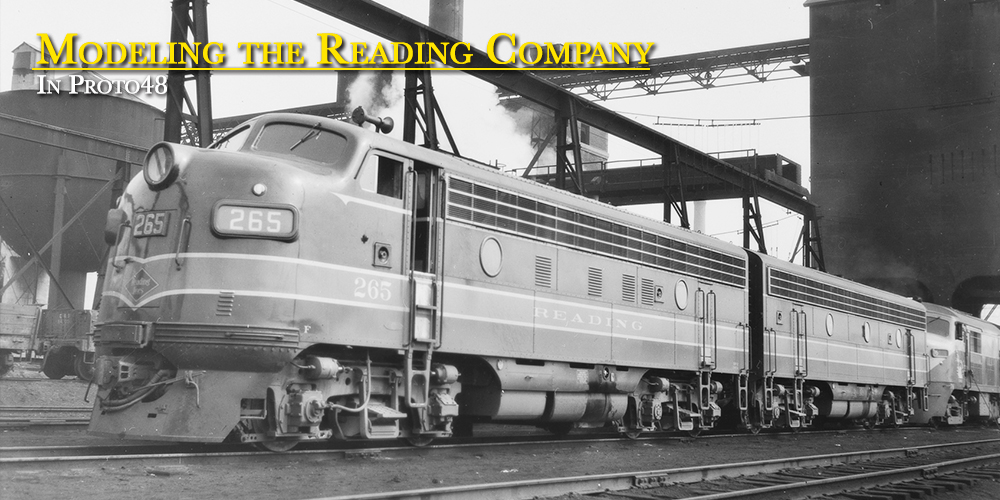
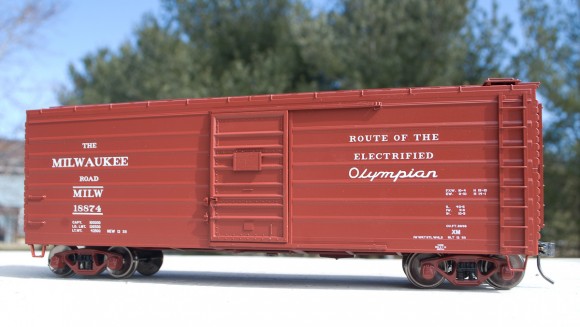
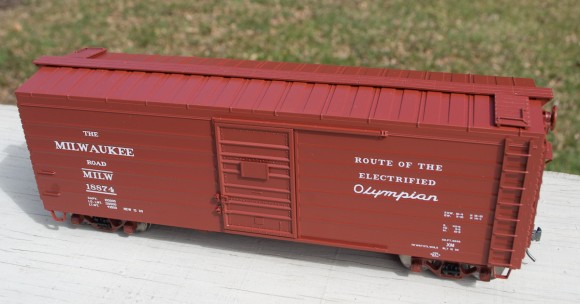
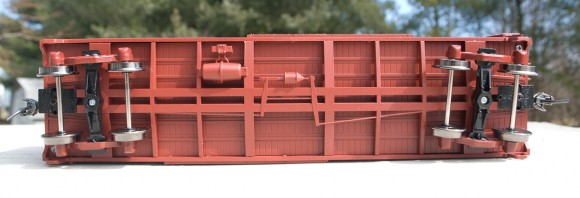
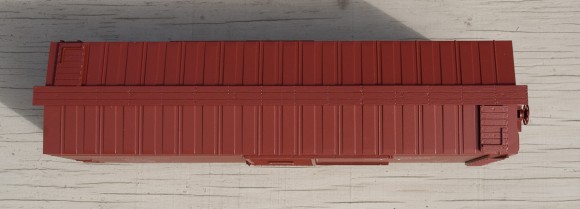
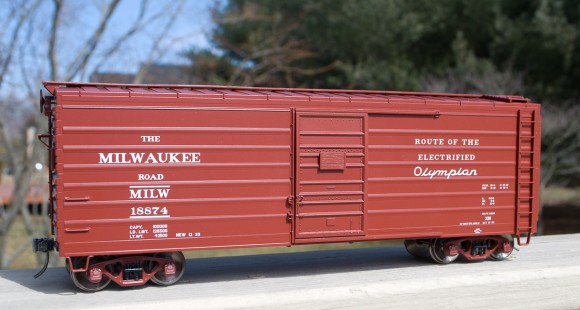
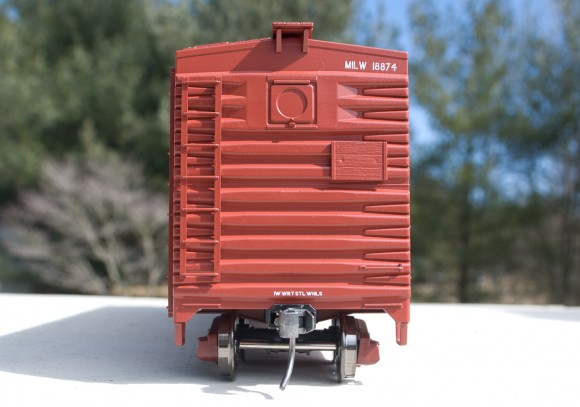
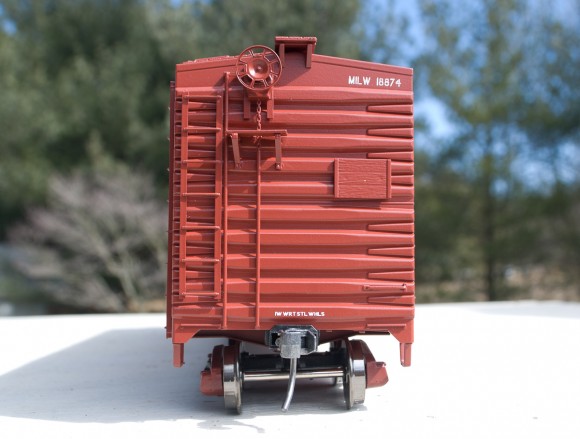
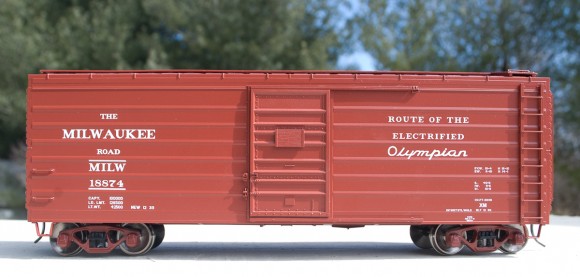
George,
Another nice write-up. Is it possible that Weaver has a photograph of a car with the numbering you bought having “Route of the Olympian” on it. Maybe Weaver would provide you with photographic proof.
Peter
Peter,
You bring up a good point. Weaver might have uncovered a photo of the boxcar I have that guys who’ve studied the prototype cars have not found in their years of research. Now do we think they found three new images? Since my dealer still had two numbers that were not on the list in addition to my model….. I tend to think Weaver numbered them with any number instead of the “known” numbers. But at least they are in the correct number series, that’s a step forward.
George